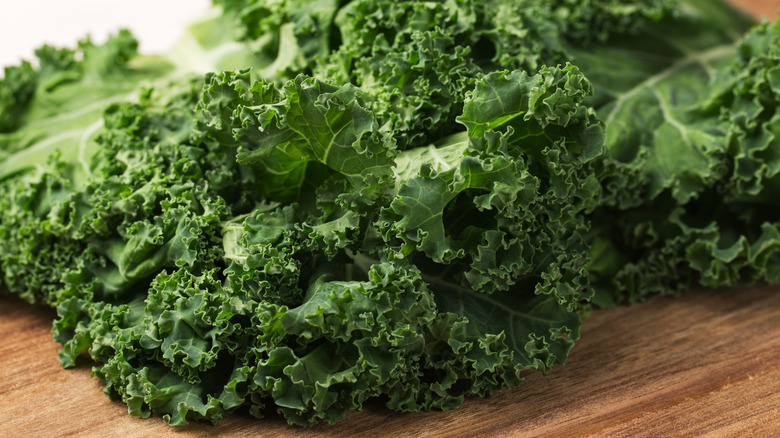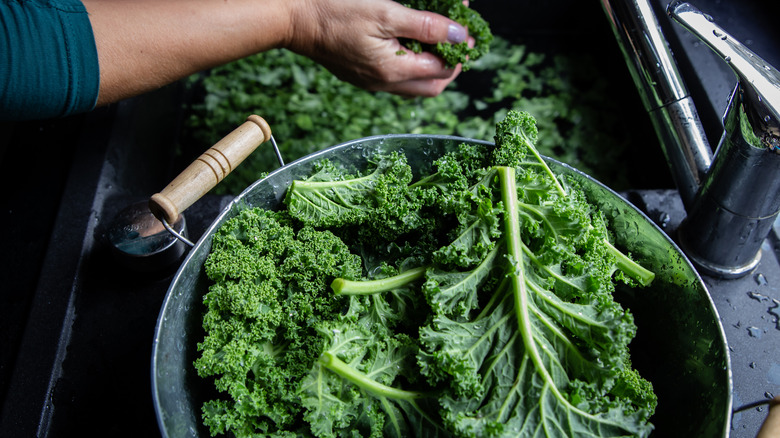The Easy Way To Bring That Wilted Kale Back To Life
If it seems like it takes almost no time for beautiful, crisp kale at the grocery store to turn into sad, rubbery, lifeless leaves once in your possession, you're not imagining things. Kale and other leafy vegetables are prone to wilting when they're left uncovered in a refrigerator. Despite the fact that they're cold, fridges are quite dry thanks to a fan that circulates chilled air throughout the inside. Since we don't have automatic sprayers at home to perk up leafy veggies like they do in the produce department, the easiest way to bring kale back to life is to shock it in cold water.
Wilted kale can give off the false impression that it's gone bad. In fact, leafy greens are one of the world's most frequently wasted foods, possibly because people mistake wilted greens for rotten ones. If your kale is looking a little lackluster — but isn't actually slimy and falling apart — it's still perfectly fine to eat, it just needs a drink of water.
How to shock kale
Kale is a fairly hearty winter green vegetable that should last in your refrigerator for at least five to seven days, but it quickly starts to lose moisture through its leaves. To get it back to its normal crispy, crunchy state of being, all you have to do is fill up a bowl or a clean sink, cut the ends off of the stems of the kale, and then submerge it in the water. Let the kale sit for at least 30 minutes before checking to see how it's looking. Especially wilted kale might take as long as two hours to come back to life, so don't give up if the leaves don't revive right away.
The most important step in shocking kale is to make sure that the ends of the stems are submerged so that they can suck up water. There are varying beliefs on whether you should use ice water or room temperature water, but good old cold water from the tap should do the trick. Keep in mind that when kale is in its prime form, the leaves will float, so if you're trying to shock kale that's already been cut up you might need to weigh the leaves down by floating another heavier object on top of the leaves, like another bowl or a plastic cutting board.
Use the crisper drawer
The easiest way to bring kale back to life, of course, is to never let it wilt in the first place. If you buy kale pre-packaged in plastic or use a disposable plastic bag from the produce section, don't open the bag until you're ready to use it. This can be hard for people who de-package all of their groceries as soon as they get home, but that thin plastic is actually keeping all of the kale's moisture inside. Once the bag is open, seal it tightly with a paper towel inside and store it in the crisper drawer, which has customized settings to keep vegetables at a higher humidity than the rest of the refrigerator.
Also, try to buy kale as fresh as possible. Local farmers selling kale probably harvested it within a few days before bringing it to a farmers market, but grocery stores often get their greens from places far from home, so be sure to check the "fresh by" dates on packages, and look for leaves that are dark green, moist, and crisp. Finally, only buy as much kale as you'll eat in a week. Once you bring a bunch home, the spoilage clock starts ticking. If it starts to look wilted after a few days, give it a shock before you toss it, and if it's still looking tired you can always freeze it and use it in smoothies.


